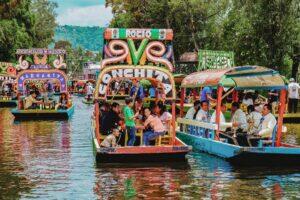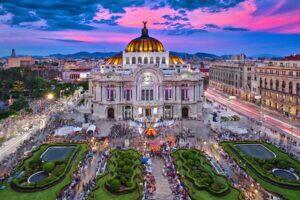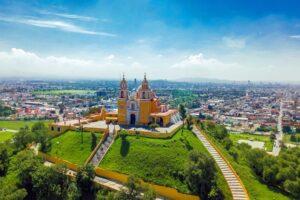Fodor's Expert Review Xochimilco Canals
A former pre-Hispanic city 21 km (13 miles) south of current-day CDMX city center, the Xochimilco neighborhood is well worth a visit to explore its vast, ancient network of canals and chinampas (man-made islands), which have been declared a UNESCO World Heritage Site. When the first indigenous settlers arrived in the Valley of Mexico, they found an enormous lake. As the years passed and their population grew, the land could no longer satisfy their agricultural needs. They solved the problem by devising a system of chinampas, rectangular structures akin to barges, which they filled with reeds, branches, and mud. They planted the barges with willows, whose roots anchored the floating gardens to the lake bed, creating a labyrinth of small islands and canals on which vendors carried flowers and produce grown on the chinampas to market.
Today Xochimilco is the only place in Mexico where the gardens still exist. Go on a Saturday, when the tianguis (market... READ MORE
A former pre-Hispanic city 21 km (13 miles) south of current-day CDMX city center, the Xochimilco neighborhood is well worth a visit to explore its vast, ancient network of canals and chinampas (man-made islands), which have been declared a UNESCO World Heritage Site. When the first indigenous settlers arrived in the Valley of Mexico, they found an enormous lake. As the years passed and their population grew, the land could no longer satisfy their agricultural needs. They solved the problem by devising a system of chinampas, rectangular structures akin to barges, which they filled with reeds, branches, and mud. They planted the barges with willows, whose roots anchored the floating gardens to the lake bed, creating a labyrinth of small islands and canals on which vendors carried flowers and produce grown on the chinampas to market.
Today Xochimilco is the only place in Mexico where the gardens still exist. Go on a Saturday, when the tianguis (market stalls) are most active, or, though it's crowded, on a Sunday. On weekdays the distinctive community is usually much less crowded, so it loses some of its vibrancy but also its chaos. It's considered almost a mandatory custom to hire a trajinera (a flower-painted boat that's roughly akin to a large gondola); a colorfully painted arch over each boat spells out its name. You can hire the trajineras at several different points in town—the launch point at Calle de Mercado 133 tends to be a little less crowded, as it's farther from the light-rail station, and a pretty pedestrian bridge crosses the canal, allowing for some great photos of these colorful boats. Expect to pay MX$500 per hour for a boat that can accommodate up to around 18 passengers. Optional extras include beer, micheladas, and soft drinks along with mariachi and marimba bands, Bluetooth audio speakers, tour guides, and decorative arches for your boat made of actual flowers. As you sail through the canals, you'll pass mariachis and women selling tacos from other trajineras, and you'll pass by the bizarre Isla de las Munecas (the Island of Dolls), which you'll know when you see it. While a Xochimilco boat tour has become one of Mexico City's top experiences, note that it's not an activity for everyone—these are basically party boats that ply some pretty murky, badly polluted waters, and while the tours can be a lot of fun for groups of friends (less so for just a couple of passengers), Xochilmilco is a long way to go for a touristy tour on a crowded canal. To get here, it's about a 45-minute to 1-hour drive, or you can take the metro to Tasqueña station, and then catch the light-rail commuter train to Xochimilco (a journey of about two hours each way).
READ LESS








